Last Updated: 10/11/2025
Chicken Health: Prevention, Parasites and Common Diseases
Keep your backyard chooks healthy and happy with our vet's expert guide. We'll show you how to recognise and prevent common illnesses and reduce the risk of sickness, ensuring a productive flock.
Author: Dr Nicole Wynne BSc BVMS MANZCVS (Unusual Pets)
Reading Time: 16 minutes - medium read
When it comes to keeping backyard chooks, the old saying 'prevention is better than cure' certainly rings true. Chickens are susceptible to a number of communicable diseases, and proactive care can significantly reduce the risk of your flock becoming unwell.
As chickens are food-producing animals, it is vital to ensure any medication they receive is approved for this use. You must also strictly adhere to the recommended withholding period (WHP) for their eggs.
A WHP is the mandatory time that must pass after the final dose of medication before the eggs are safe for human consumption. For example, if a medication has a seven-day WHP and the last dose is given on a Monday morning, the eggs cannot be eaten until the following Monday. These eggs must be discarded and should not be fed back to your chickens, as they may contain drug residues.
There are a number of medications that do not have a defined WHP for chicken eggs. In these situations your vet can help to guide you as to a reasonable timeframe but it is generally recommended to wait at least 2 weeks before egg consumption.
Vaccinations

Can you vaccinate backyard chickens?
While a vaccinated chicken has a much lower risk of disease, vaccinating a small backyard flock can be challenging. Most poultry vaccines are developed and packaged for large-scale commercial farms, which creates practical difficulties for the backyard enthusiast.
The primary challenges include:
- Timing: To be effective, many vaccines must be given very early in life, either soon after hatching or even administered into the egg. They may not be as effective if given to an older chicken.
- Dosage: Vaccines typically come in vials containing thousands of doses with a short expiry date. This is suitable for a commercial farm expecting to vaccinate thousands of chicks in one day, but is impractical and wasteful for a handful of pet chickens.
At present, the most effective way to ensure your birds are protected is to source your chickens from a larger, reputable hatchery where they arrive fully vaccinated.
What should chickens be vaccinated against?
The major disease that all backyard chickens should be vaccinated against is Marek’s disease. This is typically given day of hatch or in the egg.
Other vaccinations that may be considered depending on flock size and health status include:
- Fowl Pox
- Newcastle disease
- Infectious bursal disease (also known as Gumboro disease)
- Infectious laryngotracheitis
- Infectious bronchitis
For more information on how to find a reputable source of chickens, read through our guides to How to Start Keeping Chickens and Chicken Breeds.
Biosecurity
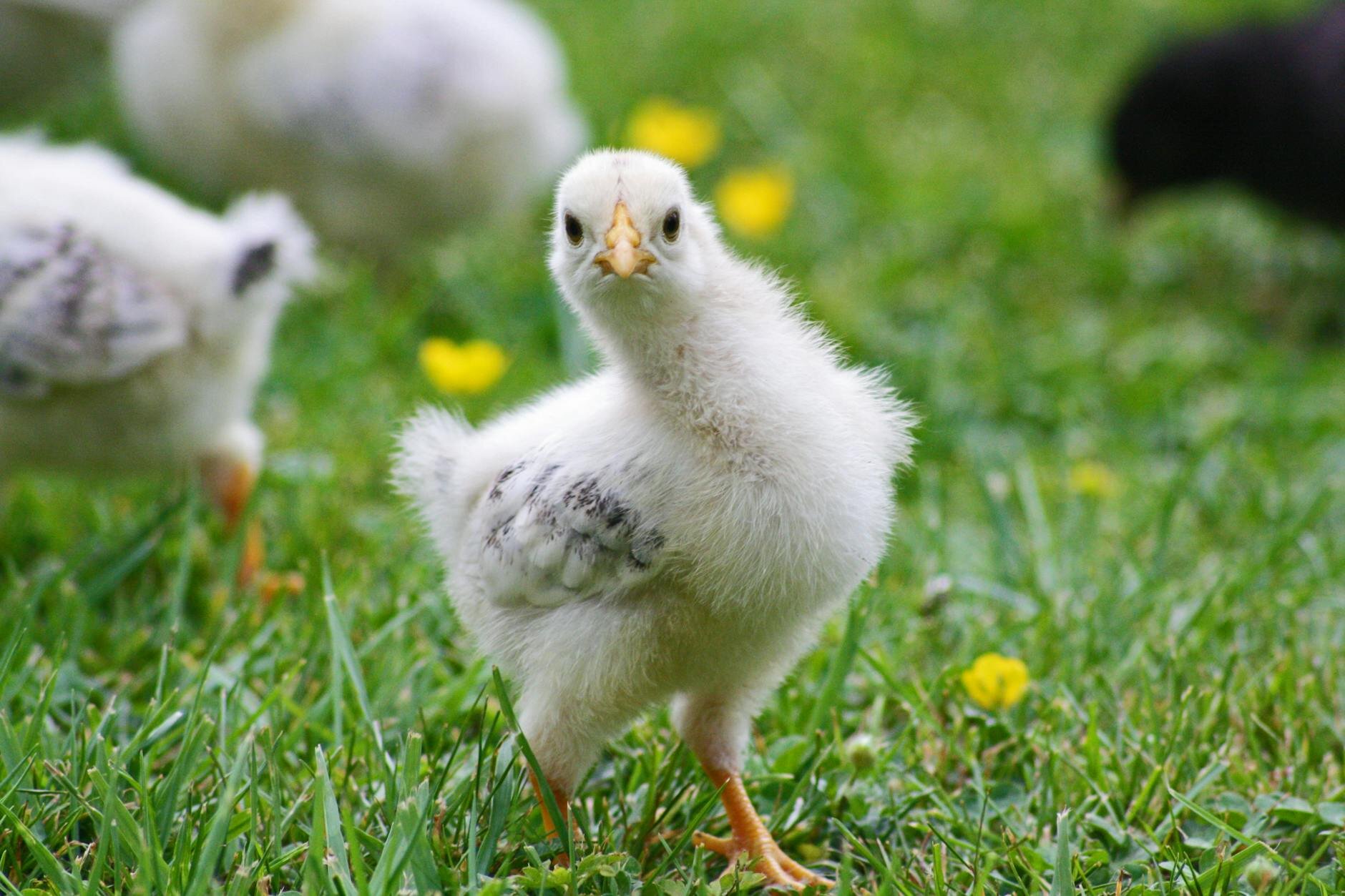
Practising good biosecurity
One of the most important things you can do to keep your flock healthy is to ensure new additions don't bring in communicable diseases. The key to this is practising good biosecurity, which starts with quarantining any new chickens before they meet your existing flock.
How to set up a quarantine area
The main goal of quarantine is to prevent cross-contamination between the new and established chickens. Your quarantine area should be set up carefully.
- Location: The quarantine area must be as far away as possible from your flock’s main living area.
- Dedicated equipment: This area must have its own separate food and water containers, bedding, and tools.
- Separate footwear: It is a good idea to have a specific pair of boots that you only wear when in the quarantine area to avoid tracking germs back to your main flock.
- Separate personnel if possible: In an ideal situation a separate person should be responsible for handling, feeding and caring for the new arrivals in quarantine and not interacting with the existing flock during the quarantine process.
The quarantine process
- Duration: New chickens must be kept in quarantine for a minimum of two weeks before being introduced to the flock. A six week period is ideal.
- Health check: Use this time to closely monitor the new birds for any signs of illness.
- Parasite control: The quarantine period is the ideal time to treat new arrivals for internal and external parasites, like worms, lice, and mites.
For more information, read through our Backyard Chicken Guide.
Hygiene

How to keep your chicken coop clean
Keeping chooks clean can certainly be a challenge. However, with a consistent routine and the right setup, you can make cleaning easier and more effective, which is vital for your flock's health.
Managing the chicken run
A healthy run is key to preventing parasites and protecting your yard.
- Use a movable coop: A "chicken tractor" style coop that can be moved regularly allows the ground to rest. This prevents the build-up of external parasites like fleas and lice and gives the grass a chance to recover.
- Rotate your flock: If your coop is stationary, consider dividing your yard into a few sections for free-ranging. By rotating your chickens through these areas, you help to reduce the concentration of intestinal parasites and protect your soil from being damaged by excess manure.
Choosing and maintaining bedding
The right bedding can make a huge difference in coop hygiene. Straw bedding works well and Hemp bedding is another excellent, low-maintenance option.
- Highly absorbent: It is very effective at soaking up moisture and controlling odours.
- Easy to spot clean: Its texture makes removing soiled patches simple and quick.
- Compostable: Soiled hemp bedding is fully compostable and breaks down into a nutrient-rich addition for your garden compost.
Cleaning routine
- Daily: Scoop out and remove any soiled or wet portions of bedding.
- Fortnightly: At a minimum, perform a full clean-out every two weeks, completely removing and replacing all the old bedding.
Parasite Prevention for chickens
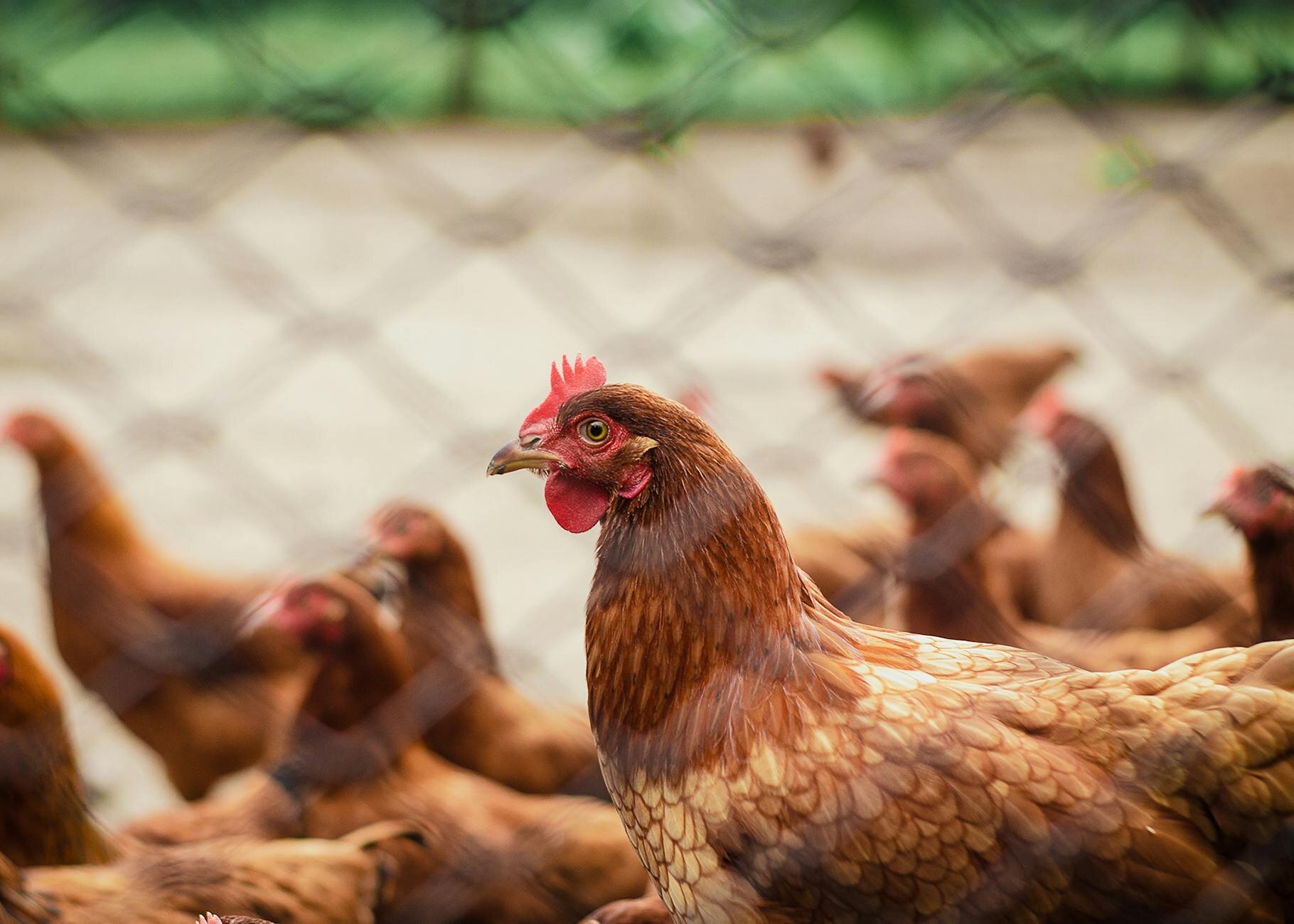
Consistent parasite prevention is essential for keeping your flock healthy. It is vital that any medication used is approved for food-producing animals, and that you always check and adhere to the egg withholding period (WHP).
Internal parasites (worms)
Treatment schedule
- Routine worming: Chickens should be wormed every thre to four months to control internal parasites.
- Faecal testing: Alternatively, your vet can perform a faecal egg test every 4-6 months to check for worm burdens and determine if treatment is needed.
External parasites (mites, lice & fleas)
Chickens are prone to external parasites, which can be very difficult to eradicate as some, like fleas, have part of their life cycle in the environment. This means that treating the coop and run is just as important as treating the birds themselves.
How to spot common external parasites
- Lice: These are often easy to see with the naked eye. Their eggs can be seen coating the feather shafts.
- Mites: Most mites are too small to see easily (no larger than a pinhead). However, you can see their effects. Scaly leg mites, for example, cause the legs to become thickened and crusty.
- Stickfast fleas: Living up to their name, these fleas attach firmly to the skin. They usually appear as tiny black specks on unfeathered areas like the face, comb and legs.
Common illnesses in chickens
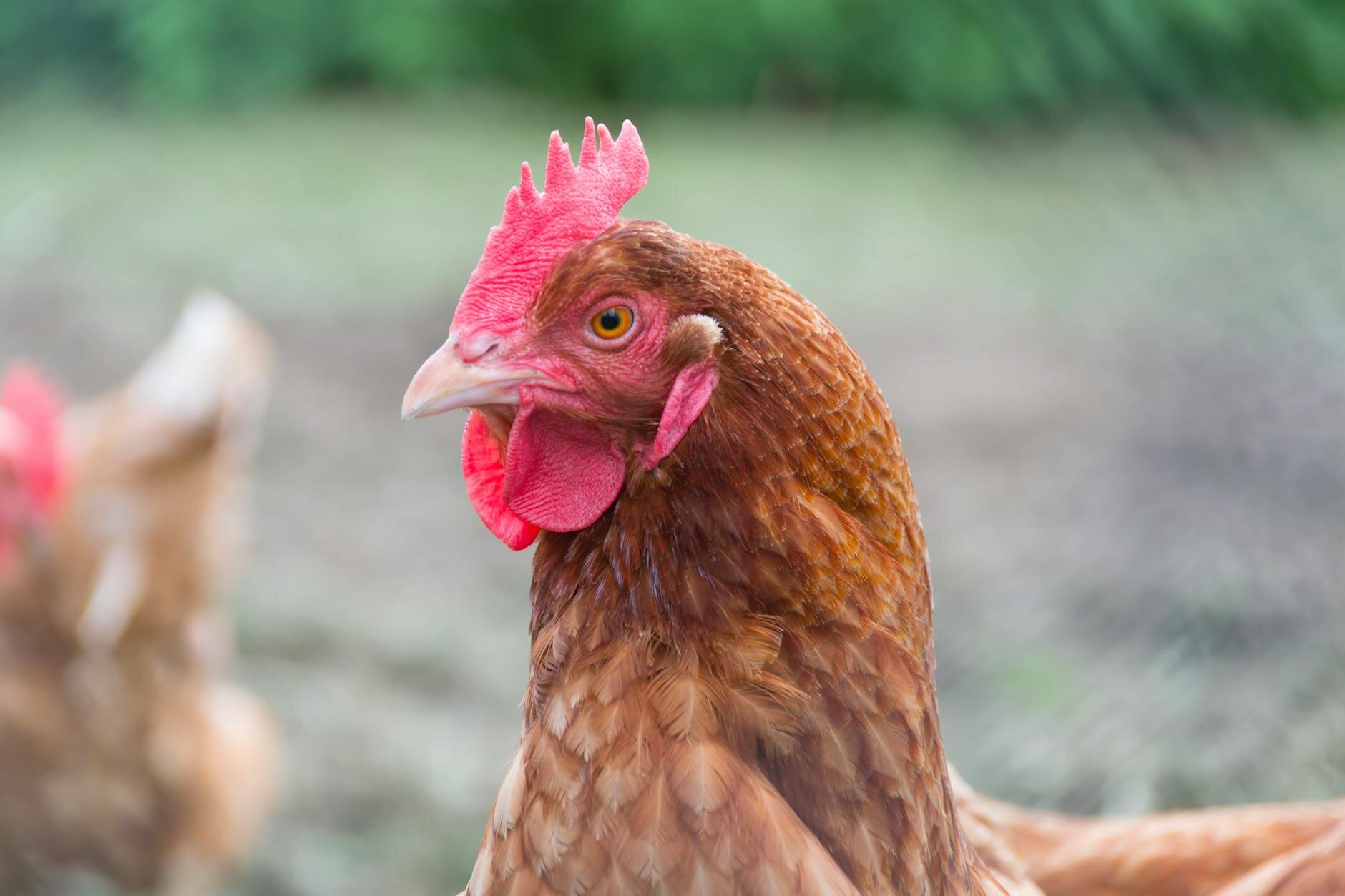
Regardless of the illness, it is important that your chicken sees a veterinarian for any health issues. Your veterinarian will be able to recommend a more effective course of treatment, as well as advise you on potential withholding periods for that treatment. Although chickens are hardy animals, they often hide symptoms of illness, and once they become overtly unwell, it is likely that they are already very sick.
Get to know what's normal for your chickens, in our Guide to Chicken Behaviours.
Respiratory disease
Chickens are very prone to respiratory diseases, but it may not be immediately apparent.
It is important to be careful when handling chickens that may have a respiratory disease to be mindful of hygiene, hand-washing, and to avoid touching your face. Some respiratory diseases in chickens can be zoonotic, which means that they can be passed to humans.
Symptoms
- Lethargy
- Weight loss
- Abnormal egg production
- Difficulty breathing
- Nasal and oral discharge
- Loss of appetite
- Sudden death
- Change in their vocalisations
- Hiding away
- Change in normal flock hierarchy
- Multiple chickens affected
It is important to be careful when handling chickens that may have a respiratory disease to be mindful of hygiene, hand-washing, and to avoid touching your face. Some respiratory diseases in chickens can be zoonotic, which means that they can be passed to humans.
Gastrointestinal illness
Diarrhoea in chickens can have several causes.
Causes
- Intestinal worms and parasites
- Bacterial, fungal, viral or protozoal infections
- Inappropriate feeding
- Heat stress
Symptoms
- Watery droppings
- Malodorous smell
- Blood in droppings
- Bright green droppings
- Faecal and urate staining along the vent feathers
- Lethargy
- Inappetance
- Faecal staining on eggshells
- Sudden death
When watery droppings aren't diarrhoea
It's important to know that some serious health conditions can mimic the signs of diarrhoea, even though they don't originate in the gastrointestinal tract. Because these conditions require specific treatment, a prompt visit to a veterinarian is essential to figure out the true cause of your chicken's symptoms.
- Polyuria Polyuria refers to increased urination. All bird droppings contain a faecal component (the poo), a uric acid compoment (the white urates) and a urine component. Excess urine can be caused by conditions like reproductive and kidney disease as well as heavy metal poisoning. The excess urine creates very watery droppings, but it is not true diarrhoea.
- Caecal droppings are another type of dropping that chickens produce. These droppings are produced a few times each day. Rather than coming from the large intestine, these droppings come from another organ, responsible for fermenting plant matter -the caecum. These droppings are dark brown, very runny in nature and have a strong odour. They can be mistaken for diarrhoea but are completely normal.
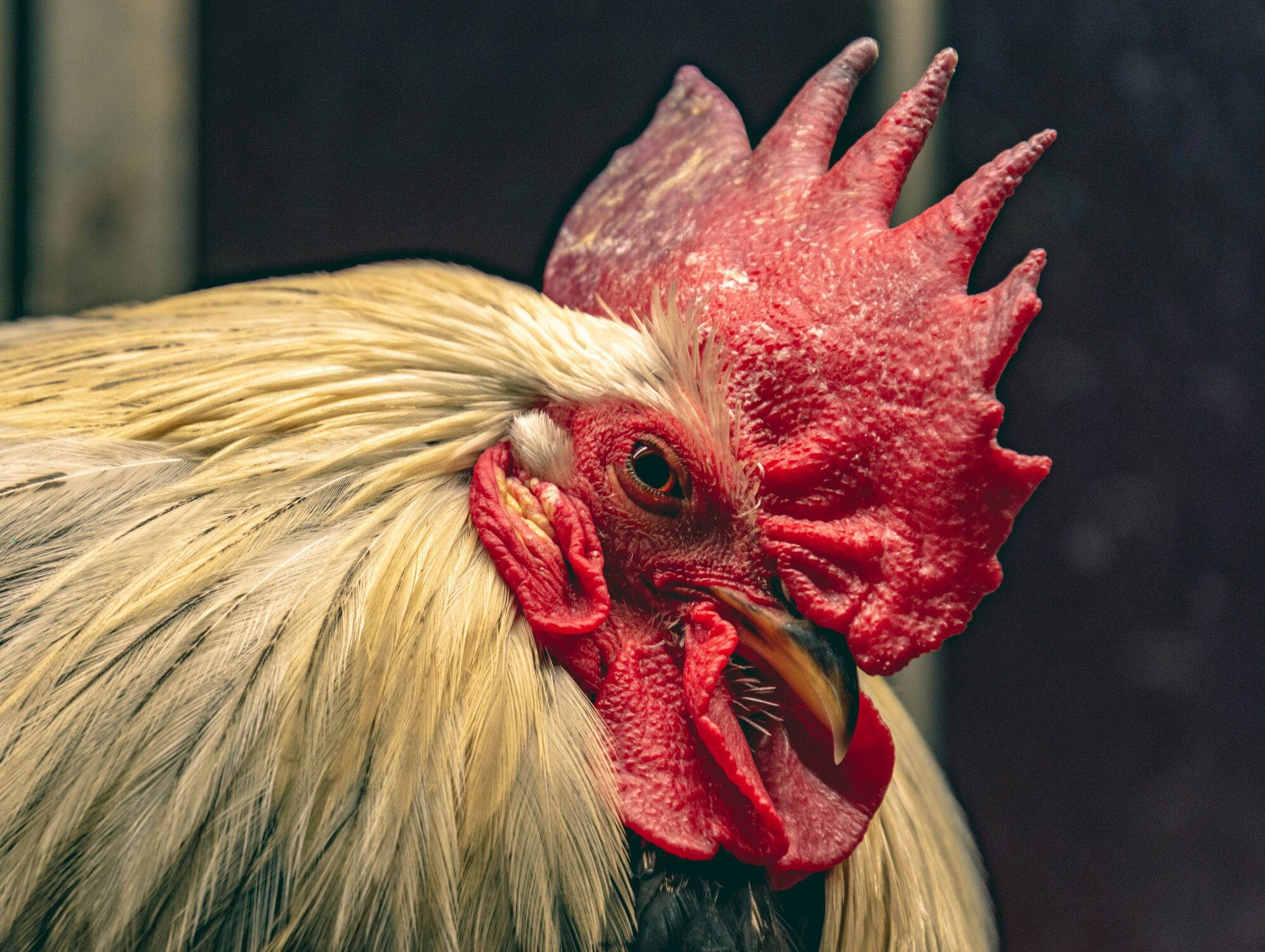
Crop problems
The crop is a pouch-like extension of the oesophagus that stores food before it moves down to the stomach. After a chicken has eaten, you can usually feel the crop as a soft, mouldable lump about midway down its neck. While it's a simple organ, it can still run into trouble.
These are the most common issues affecting the crop are impaction and infection.
- Crop stasis: This refers to a delayed emptying of the crop. The crop is a temporary food storage organ but food should pass through the crop into the lower digestive tract every 4-6 hours. Failure of crop emptying leads to accumulation of fluid and food material in the crop causing regurgitation and crop infection (see below). There are many potential causes of crop stasis but it generally always indicates a more serious underlying issue.
- Crop impaction: This occurs when a food item (or something indigestible) gets stuck in the crop and is unable pass into the stomach. The most common cause is long, fibrous grass, which can happen when chickens graze in overgrown areas. To minimise this risk, it's best to keep their grazing grass no higher than 10cm.
- Crop infection (sour crop): Infections can be caused by bacteria, fungi (yeast), or protozoa. It is vital to get a veterinary diagnosis before starting any treatment, as the medication required is different for each cause. An antibiotic, for example, will not work on a fungal or protozoal infection.
Symptoms
- A large, visible lump on the neck that does not go down overnight
- Regurgitation
- Bad breath (often a sour or foul smell)
- Nasal discharge
- Loss of appetite (inappetence)
- Lethargy
Reproductive disease
Sadly, many popular egg-laying breeds are prone to reproductive diseases. This is because they have been selectively bred for high egg production, which puts significant strain on their bodies over time. For example, Isa Browns, a very common backyard breed, frequently develop reproductive problems even as young as 6 months of age.
The most common reproductive diseases in chickens include an inflammatory condition called egg yolk peritonitis, soft-shelled eggs due to low calcium, reproductive tract infections and reproductive cancers. Egg binding in chickens is rare but does occur sometimes.
Symptoms
While a hen with a reproductive issue may not always produce abnormal eggs, the presence of abnormal eggs is always a cause for concern.
Abnormal eggs to watch for:
- Shell-less, soft-shelled, or wrinkly eggs.
- Oddly shaped eggs.
- Smaller than usual eggs.
- "Lash eggs" - these are not true eggs, but rather an abnormal accumulation of inflammatory material passed from the reproductive tract.
Other symptoms include:
- A drop in absence of egg production.
- A swollen abdomen.
- An abnormal posture or gait
- Heavy or laboured breathing.
- Diarrhoea, watery droppings or other abnormal droppings.
Egg binding
Egg binding is a specific condition where a hen is unable to pass an egg. While serious, it is far less common than many owners think, as most chicken breeds are selected for their ability to lay eggs easily. When it does occur, it is typically only seen in young or very small hens like Bantams and Silkies. It is often linked to an inappropriate diet or environment.
Unfortunately, many other serious reproductive diseases are often misdiagnosed as egg binding by owners. Delaying a vet visit to try home remedies can be fatal if the underlying cause is something else. If you suspect your hen is unwell, a prompt veterinary consultation is always the best course of action.
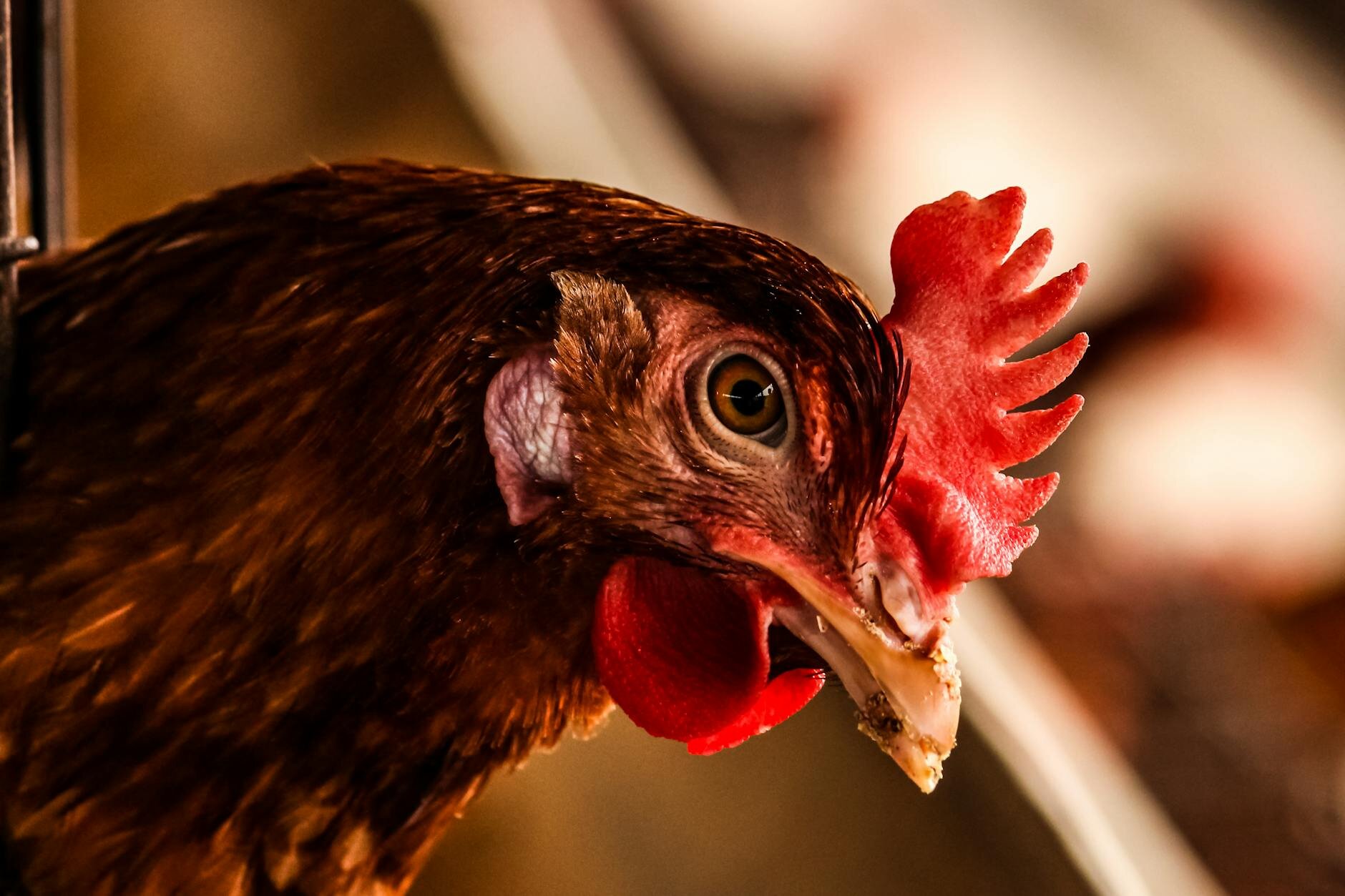
Musculoskeletal issues
Chickens can suffer from a range of problems affecting their bones, joints, and muscles. While some issues are common and easily recognisable, others can be a sign of a more serious underlying disease.
Bumblefoot (pododermatitis)
Most chicken owners are familiar with bumblefoot, which is an inflammatory condition of the footpad that starts as a pressure sore and can develop into serious infection. Risk factors include:
- Rough, hard, or abrasive flooring.
- Unhygienic surroundings in the coop and run.
- Obesity, which places extra pressure on the feet.
- Lameness or pain in one leg, which forces the other foot to bear more weight.
- Inadequate space, lack of exercise or a sedentary lifestyle.
Gout
Gout is caused by kidney dysfunction, which leads to a painful build-up of uric acid crystals within the joints and organs. This serious condition requires veterinary attention to manage the underlying kidney issue and provide pain relief. Symptoms of gout include:
- Hot, swollen, and painful joints.
- Lameness.
- Deformed or knobbly toes.
- Reduced range of motion.
Osteoarthritis
Just like cats, dogs, and people, chickens can develop osteoarthritis, especially in older age. The symptoms can be subtle and easily mistaken for a chicken simply "slowing down" with age. Signs to look for include:
- Moving around more slowly.
- Lameness.
- Sitting or standing in unusual postures.
- Sensitivity to touch over their joints.
- Reduced appetite. A vet may diagnose the condition using a physical exam, a trial of pain relief medication, or X-rays.
Paralysis
Paralysis can be a symptom of Marek's disease, a serious viral illness. Affected chickens often display a characteristic splayed posture, with one leg stretched out in front of them and the other stretched out behind. Paralysis can also be caused by other things like nutritional deficiencies and toxins so it's important to seek out a veterinary diagnosis.
FAQs
Proactive care is the cornerstone of a healthy backyard flock. By focusing on good biosecurity, strict hygiene, and regular parasite prevention, you can protect your birds from many common illnesses.
Remember that chickens often hide symptoms until they are very unwell, so always consult your vet promptly if you notice any signs of sickness. A little prevention goes a long way in ensuring your flock remains happy and productive.
Articles recommended for you
Our vet authored guide to the benefits of feeding your dog fresh food plus tips and advice for introducing it into their regular menu.
See our guide to protecting your pet from parasites from our vet team.
Thinking of getting a fish? Check out our guide for setting up a tank and home care tips!
Looking to understand horse feeds better? This comprehensive guide covers feeding recommendations for horses of all ages and disciplines.
Does your pet suffer from anxiety? Check out our Vet-guide for treatment options to help your pet.
History
Our experts continually monitor the health and wellness space and we update our articles when new information becomes available.
Mon 10 Nov 2025
Edited by Dr Olivia Clarke BSc BVMS MANZCVS (Unusual Pets, Avian)Medically reviewed by Dr Olivia Clarke BSc BVMS MANZCVS (Unusual Pets, Avian)Dr Nicole Wynne BSc BVMS MANZCVS (Unusual Pets)
Veterinarian, MANZCVS (Unusual Pets)
Dr. Nicole graduated from Murdoch University in WA in 2014, and immediately started working in exotics-only practice. She was also one of the few vets in Australia that would routinely see venomous snakes ranging from death adders to tiger snakes. Although Dr. Nicole enjoys seeing all exotic pets, her absolute favourite are rabbits. She passed her Australian and New Zealand College of Veterinary Scientists Membership (MANZCVS) exam in unusual and exotic pets in 2021.

